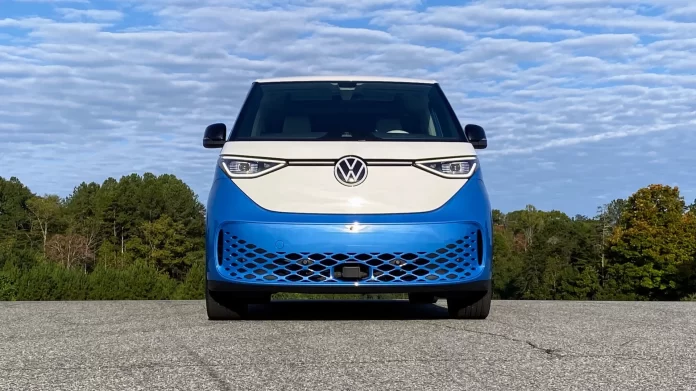- The VW ID.Buzz borrows just the right amount of retro-Bus cues
- With the ID.Buzz marks the first fully electric minivan
- The ID.Buzz costs a flagship $61,545 and has up to 234 miles of range
Does it hold up to the original? Does it need to at all?
Retro revivals of pop-culture touchpoints, let alone counterculture icons like the Volkswagen Bus, are fraught territory. But long-awaited drive time with the 2025 Volkswagen ID.Buzz recently underscored to me that VW has navigated this wisely, and with some noteworthy dollars-and-sense asterisks. It’s a brilliant, charming all-electric family vehicle.
Sure, the ID.Buzz may play the retro cards mighty strong up front, but it’s all about setting the first impression and then not going overboard with it. Along the sides, it only borrows some retro-Bus cues in the windows (note that window-within-window) and the beltline. Around back, it’s mostly business—more an evolution of the Eurovan design, with a boxy, squared-off look that doesn’t borrow much from the flower-power Type 2 Bus.
2025 Volkswagen ID.Buzz
It’s been a long time for the electric VW Bus
Americans have had two extra years to mull over the ID.Buzz after it went on sale in Europe—and nearly eight years in all since it was shown as a production-bound concept vehicle. Those couple years brought a 10.0-inch stretch and a third row to the U.S. version, with no plans to offer the original two-row version here. Other improvements for us include a bigger 91-kwh battery pack, a more powerful rear motor, a new infotainment interface, and various software improvements.
The latter pieces fit right into a cabin design that takes the modern route, with retro hints kept mostly distant. The 12.9-inch touchscreen in the middle of the dash sets a stylish look that meshes with what VW has used inside the ID.4, and faux wood dash inlays interrupt what would otherwise be a sea of plastic. An available electrochromic panoramic roof turns a cloudy gray on a sunny day (your “Box of Rain”?), while the tall center console is a cargo box that can be pulled out of the Buzz like a cooler. Multiple tiers of bins on the doors and dash leave you lots of storage options for the smaller acts of kindness.
VW ID.Buzz shoppers have a choice between seating for six or seven. You get the latter layout with the standard second-row bench for most of the lineup, but all-wheel-drive versions get the six-passenger seating (optional for $695 on some of the other rear-wheel-drive models).
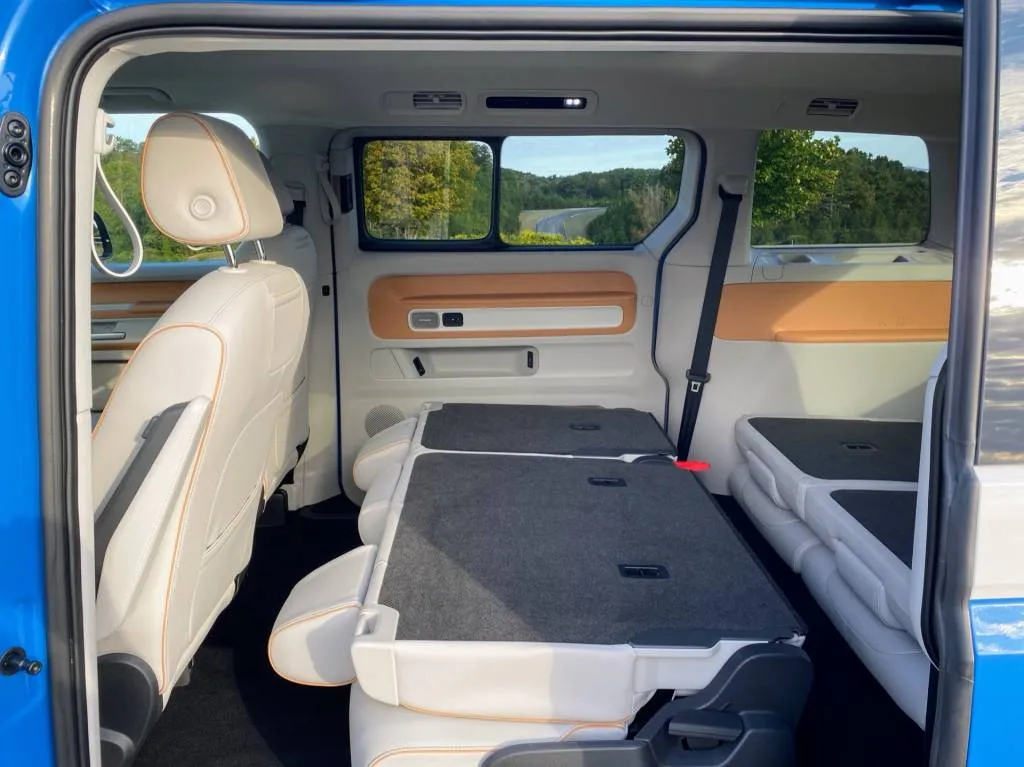
2025 Volkswagen ID.Buzz
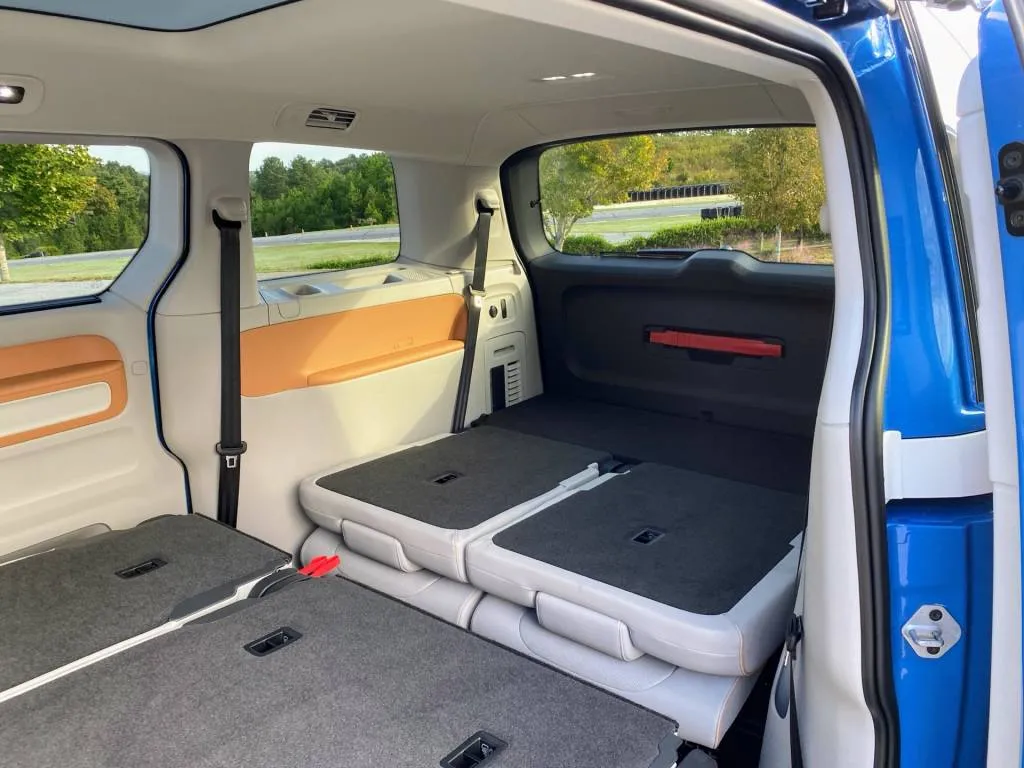
2025 Volkswagen ID.Buzz
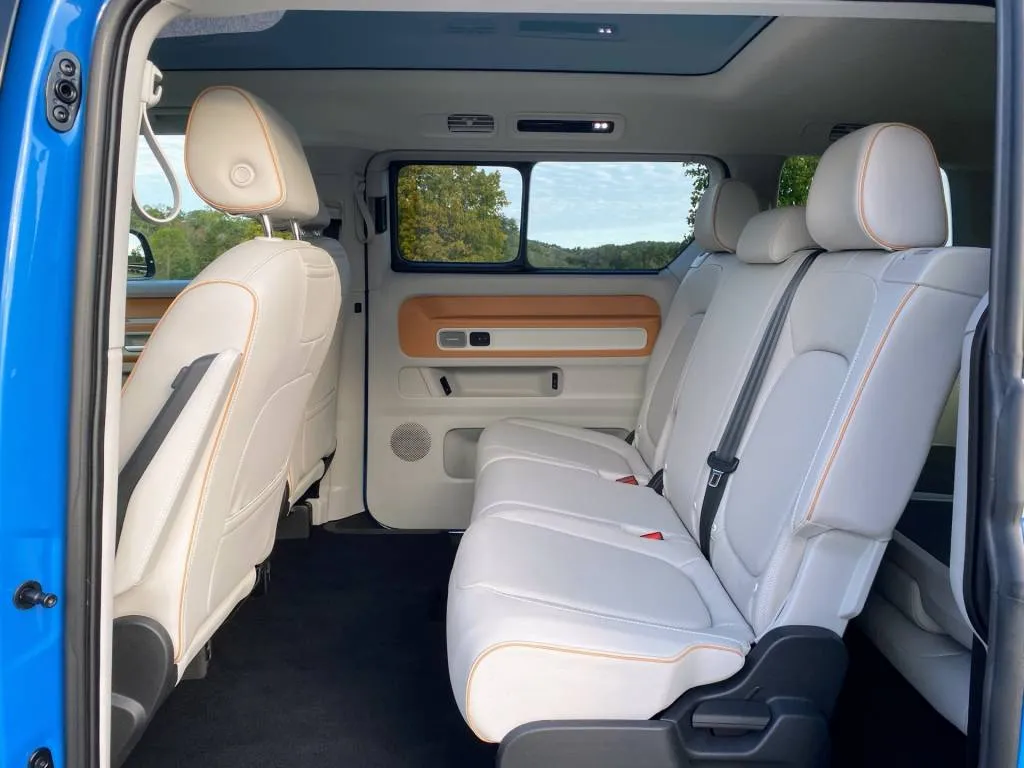
2025 Volkswagen ID.Buzz
ID.Buzz is family-SUV-sized but does more
The 2025 VW ID.Buzz is right at the heart of family-sized by today’s American vehicle standards. At 195.3 inches long, riding on a 127.5-inch wheelbase, its three rows have enough legroom and headroom for all sizes of adults, and getting to the third row is easier than in most SUVs as the roof doesn’t taper much if at all. Sit in the third row of the ID.Buzz and, unlike in many three-row SUVs, you can skip the claustrophobic feelings and have a view outward. It’s also refreshing for adults not to sit so low.
If you’re thinking minivan thoughts, so are we. The several days our editorial team spent around an ID.Buzz recently, we all kept coming back to the idea that this is the first fully electric vehicle conceived primarily to be a passenger van. Carrying people on the road is its priority, not off-roading or towing.
That’s not to say the ID.Buzz can’t do those things, to some limited degree. The 6.1 inches of ground clearance should be enough to get you to campsites, and VW formally approves the Buzz for towing up to 2,600 pounds (braked) or 1,650 pounds (unbraked). It won’t tow or off-road like a Rivian R1S, or make the most of its battery pack quite like a Kia EV9, but its huge sliding doors earn their keep.

2025 Volkswagen ID.Buzz
Is the ID.Buzz the leading edge of an electric minivan surge?
The ID.Buzz feels less like the trailing edge of a retro revival and more like the leading edge of an electric minivan wave. Just as today’s minivans surprise with their handling and driving attributes, the ID.Buzz is rather impressive in the twisties—as long as you acknowledge its 76.2-inch height.
Recent driving opportunities in Georgia and Michigan showed me that the ID.Buzz prioritizes ride quality, but push it harder on a twisty road and its low center of mass, thanks to the hefty battery pack and skateboard layout, gives it an unexpected poise. I wouldn’t go so far as to call it nimble, and you sit high so the pitch-and-roll motions are exaggerated, but nicely weighted steering gives it a precision in lane placement that’s welcome in such a large vehicle.
Thanks to stellar outward vision—camera views are great, but you can’t beat real windows—plus a compact-car-like 37.4-foot turning radius for rear-wheel-drive models, the Buzz is a lot easier to maneuver in the city and parking lots than the measuring tape would otherwise suggest. AWD versions bump it out to 42.7 feet.
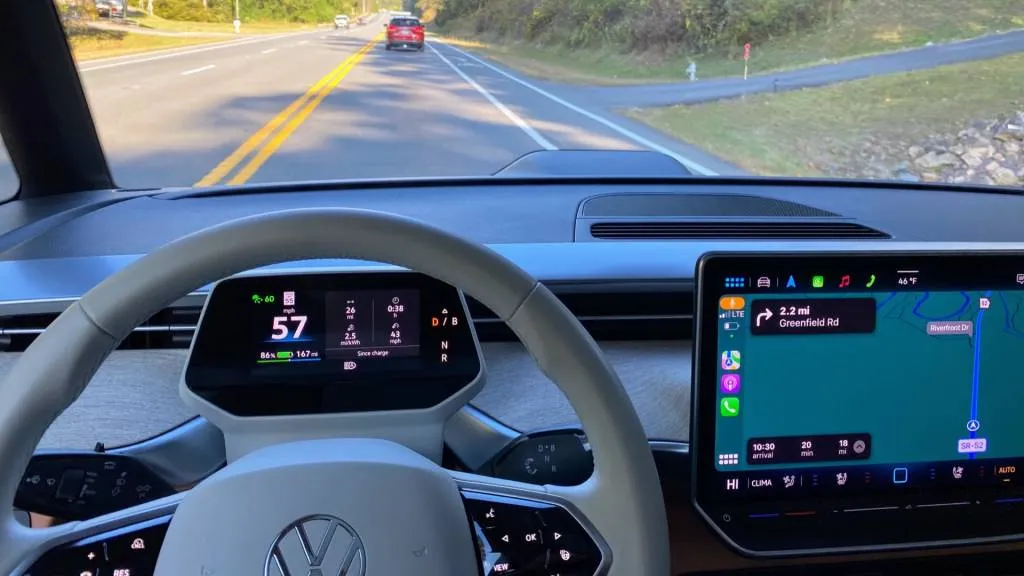
2025 Volkswagen ID.Buzz
VW ID.Buzz drives big, aims for 200+ miles a charge
The ID.Buzz is offered in single-motor rear-wheel-drive and dual-motor all-wheel-drive layouts, with both using the same uprated electric drive unit at the rear wheels making 282 hp and 413 lb-ft of torque. Dual-motor versions add an inductive motor at the front wheels that makes 99 lb-ft of torque and ups total output to 335 hp.
It drives big versus some of today’s electric crossovers, but versus other vans and minivans it’s a familiar driving experience. Battery aside, the ID.Buzz has the same propulsion system that powers the revamped 2024 VW ID.4 lineup, but here it’s in a vehicle that weighs more than a thousand pounds extra. While reasonably perky at lower speeds especially, it’s brisk enough in most situations but not downright quick for passing. An all-wheel-drive model did feel more energetic on a backroad jaunt than the rear-wheel-drive version, at the expense of steering feel and somewhat more road harshness—perhaps from the weight difference.
The Buzz is built on the same MEB platform for affordable EVs as the ID.4, with struts in front and a multi-link layout in back. It also gets front disc and old-school rear drum brakes. Regenerative braking is your friend with this much weight, but there simply isn’t enough of it, even in the “B” mode that dials in more regen. A Sport mode also bumps it up slightly and adds an edge to the accelerator inputs.
The ID.Buzz has a bigger battery pack than the ID.4, but a smaller one than long-range versions of the Kia EV9 (99.8 kwh). At 91 kwh (86 kwh usable) for the ID.Buzz, it affords EPA ratings of 234 miles for rear-wheel-drive versions and 231 miles with all-wheel drive—numbers that came close to my real-world results. A coefficient of drag of 0.29 surely helps with that, although in a first drive we noticed that some wind noise became noticeable from around the front pillars and side mirrors nearing 70 mph.
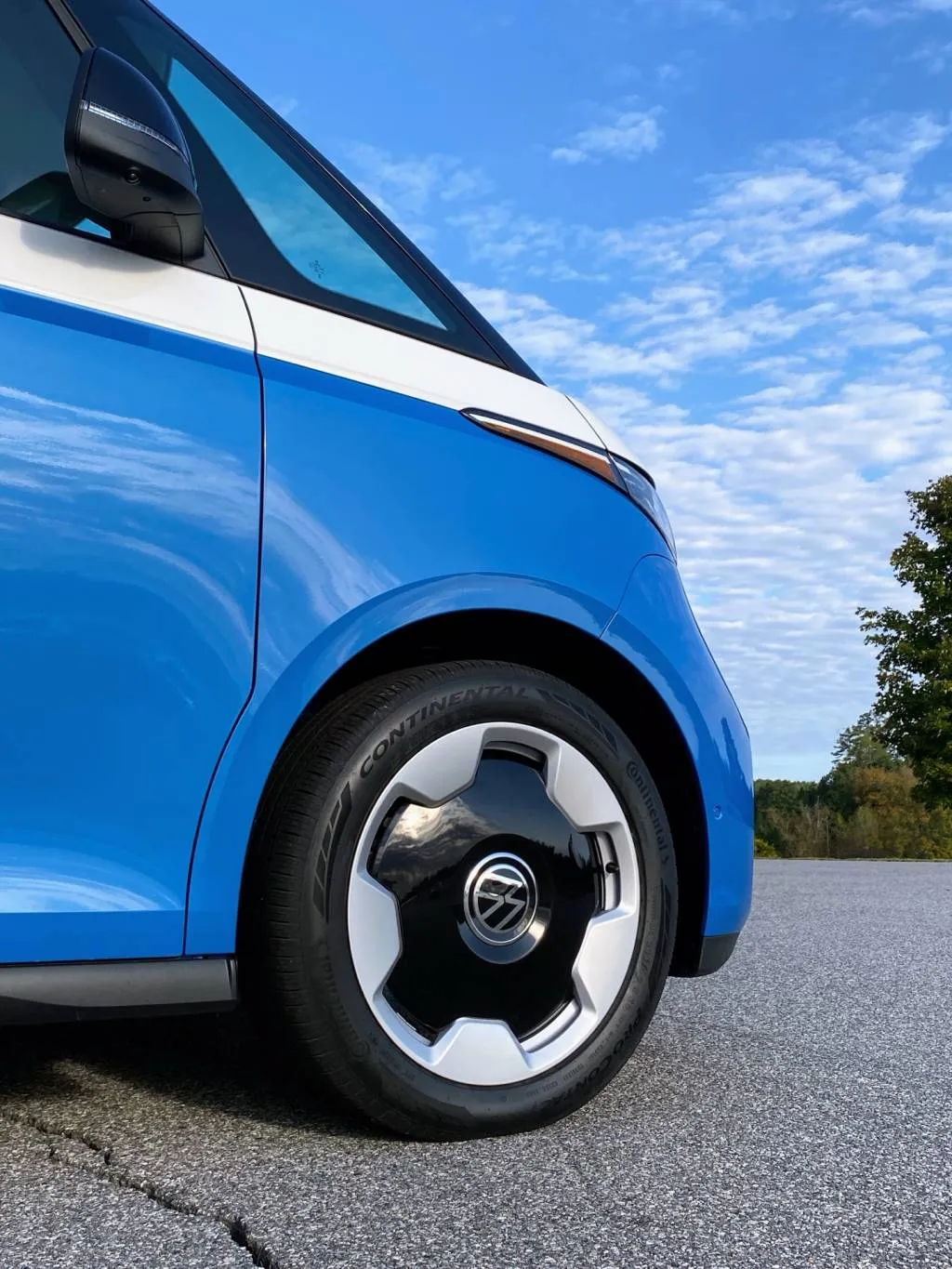
2025 Volkswagen ID.Buzz
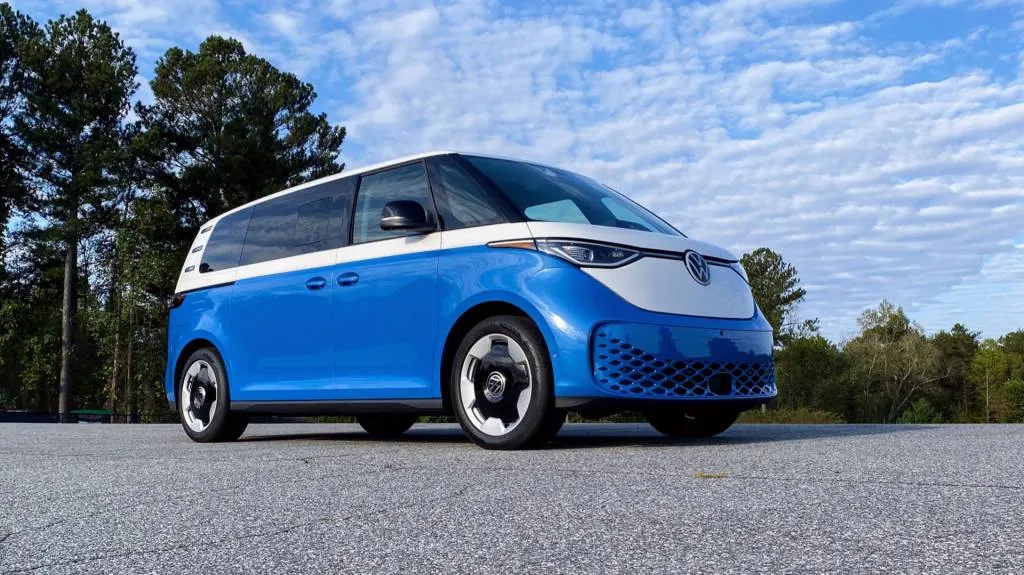
2025 Volkswagen ID.Buzz
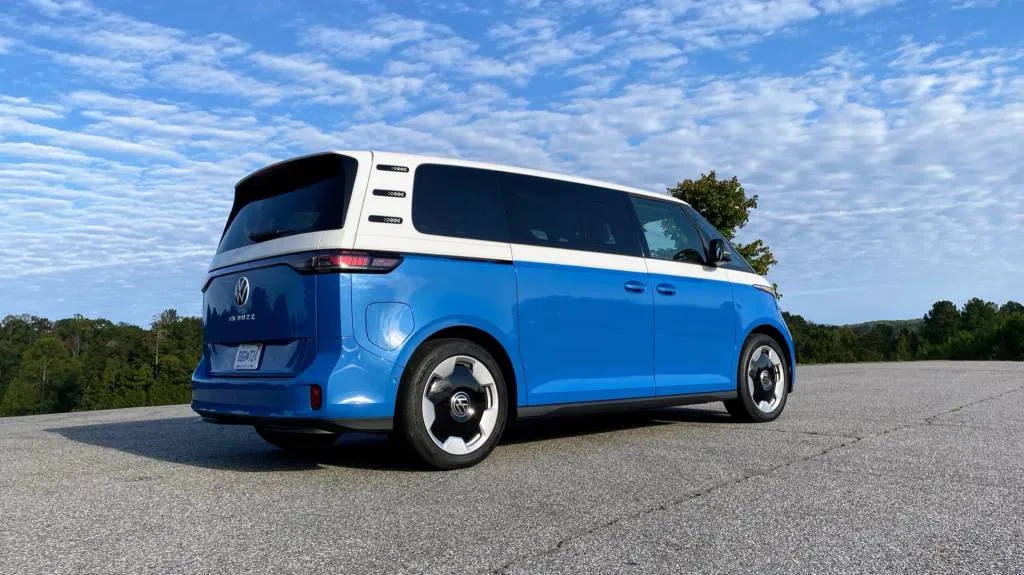
2025 Volkswagen ID.Buzz
ID.Buzz is family-sized—and not cheap
The 2025 Volkswagen ID.Buzz checks all the boxes of a modern family vehicle, including a flexible second-row layout, heated outboard second-row seats, heated-and-cooled front seats, and a second and third row that both fold flat to the same plane. For now those who’ve been around and back with a Bus might be dismayed to find there’s no official sleeping accessory; but a piece of plywood and a mattress pad would do wonders. The seats can be removed (they’re very heavy), and most versions of the Buzz come with cargo baskets underneath a sturdy hinged door at the rear of the vehicle, so as to level out a floor that, under it all, isn’t entirely flat.
For now, VW ID.Buzz prices position this van as a premium vehicle, and a flagship for the VW lineup, starting at $61,545, including the $1,550 destination fee, and ranging up to $71,545. The version we tested, a mid-range Pro S Plus in Cabana Blue and Candy White ($995 extra), with the electrochromic roof ($1,495) optioned, added up to $67,535. The Buzz is made in Germany, with no plans for U.S. assembly or EV tax-credit eligibility.
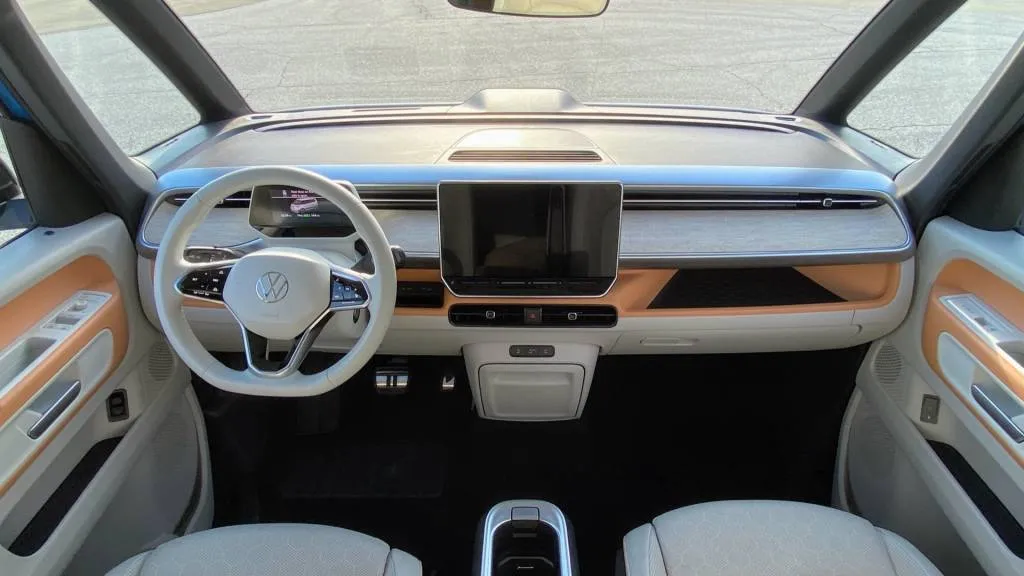
2025 Volkswagen ID.Buzz
Even with the base Pro S, the Buzz includes three-zone climate control, a power tailgate, power sliding doors, and the full set of active-safety tech. Pro S Plus versions add a head-up display, Harman Kardon audio, a retractable tow hitch, and more, while the top 1st Edition gets the panoramic roof, roof cross bars, and the two-tone look standard.
All this leads back to the question of whether the ID.Buzz needs to be anything close to what the original VW Bus was in the market—and if Volkswagen will rise to the challenge with true electric VW Bus lifestyle upfits. The original took an austere, no-frills path to popularity, and its $2,550 top-end price in 1965 would amount to about $25,400 today. The price of all vehicles has risen, as the bar for requisite safety and tech has gone much higher. However, with the average price of new vehicles at around $48,000, the ID.Buzz carries a luxury price.
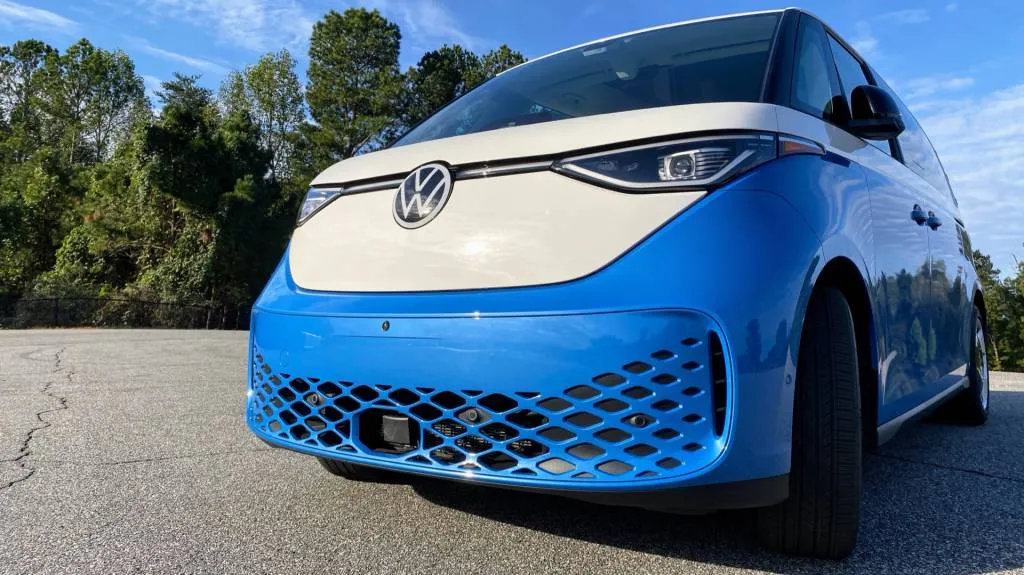
2025 Volkswagen ID.Buzz
Did VW play its retro cards just right, or misread the room completely? Whether or not VW brings the mass market to the ID.Buzz, or brings the ID.Buzz to the mass market, remains to be seen.

